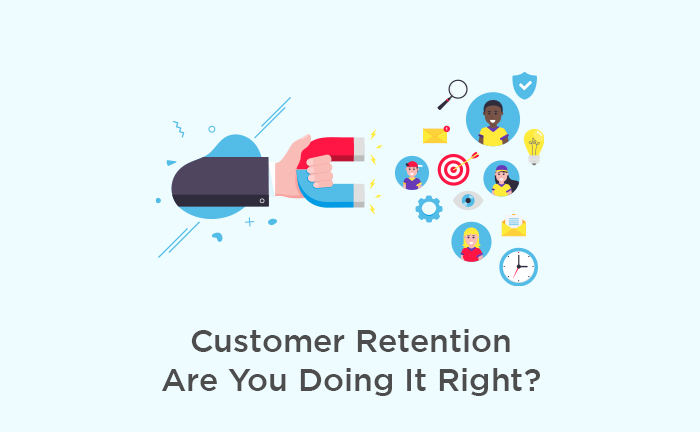
Have you ever had a customer become disillusioned and walk away? Customers rarely give brands a second chance. Especially in the world of marketing where a single setback can create a domino effect of customers leaving your app or website.
Brands prioritize new customer acquisitions more than retention, instead of decoding how to retain a present one. If you do the math, it’s more sensible to retain a customer than to spend your budget completely on new customers.
It’s easier (and more affordable) to have a present customer make a second purchase than it is to have a new customer do so. In this blog, we are going to cover the things every marketer should know about customer retention alongside some tips to do it better.
It’s more than keeping customers glued
It’s also about having them interact and spend more time on your website or app. When it comes to keeping customers happy, you have to think about the experience you provide, investment to generate more value for them, and the lifetime value that an individual customer dedicates to your business.
Segment your audience
All customers are not the same and neither do they all want the same thing. Customer segmentation divides your audience by their needs, age group, location, language, business, so on and so forth. This allows you to create an individualized and dedicated strategy for each segment of your customer group, and assist them in a personalized manner.
Spending along a timeline
Your retention budget is inversely proportional to the stage that your business is in. An enterprise must spend more on retention as it gains traction and reaches its later stage than it should during its nascent stage. Soon after setting up your website or app business, you don’t need to spend as much for retention.
Retention KPIs
In the above points, we communicated why repeat customers are more profitable to a business. These KPIs that define the retention of a customer are as follows.
• Repeat customer rate
Repeat rate is the percentage of how often customers repeat visits across a specific period of time.
• Purchase frequency
A timeline of how often customers repeat orders from your store along a fixed timeline. Purchase frequency should be calculated along the same timeline as that of the repeat customer rate.
• Average order value
This KPI provides the average amount spent by an individual customer with each repeat purchase along with a time frame, which should be the same timeline as that of the repeat customer rate.
• Customer lifetime value
Lifetime value is the amount of time or credit that a customer has spent in your store during their entire lifetime on your app. You can calculate the customer value with this simple formula.
Customer value = Purchase Frequency x Average Order Value x Number of years
Enjoyed this read? We have more. Scroll through our website for more information on intent marketing, Social media promotion, how to engage with customers, scale up your business, and more.



0 Comments